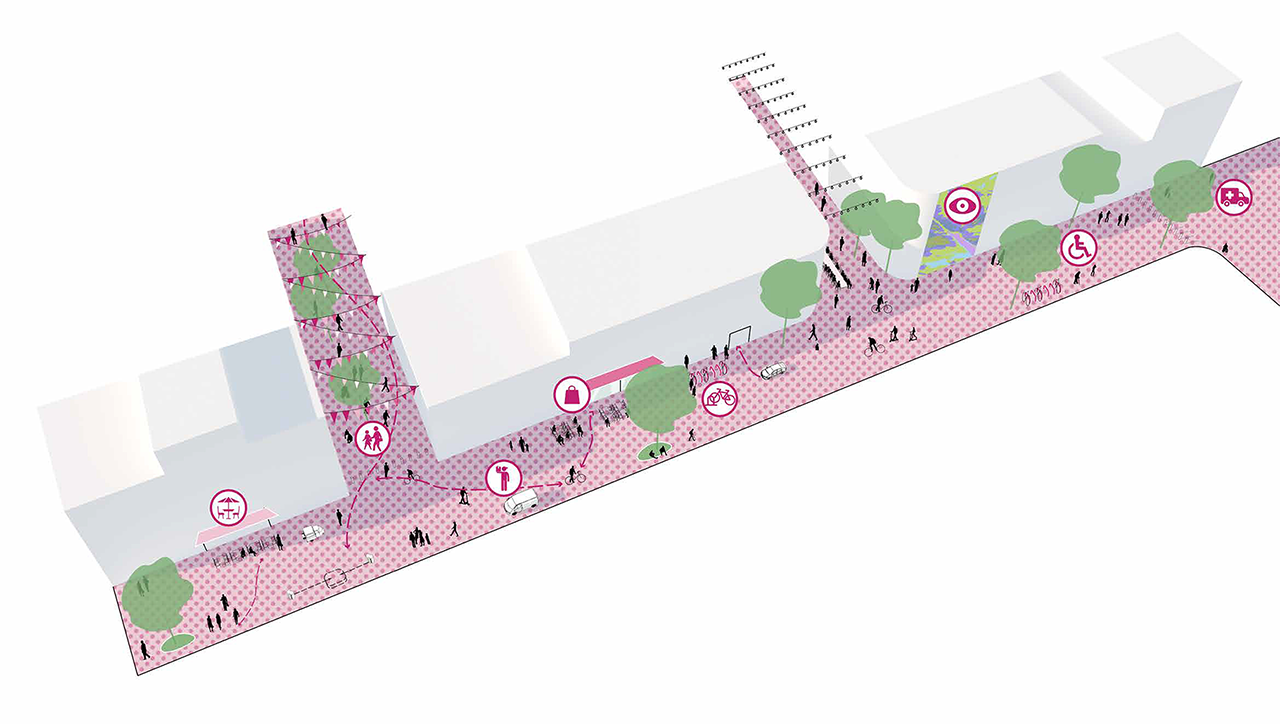Making Waihorotiu / Queen Street Valley more attractive, pedestrian-friendly and connected
How we can make this happen
Access for Everyone (A4E)
A4E will deliver a pedestrian-friendly, high-amenity, safe and vibrant core to the city with quality and zero-emission public transport.
By substantially reducing through-traffic, it will prioritise walking, cycling and public transport through a series of interventions, informed by universal design.
These include expanding the pedestrian priority laneway circuit (Federal Street and High Street being the immediate priority).
The concept complements ongoing and planned streetscape improvements across the valley including Albert Street, Quay Street, the Victoria Street Linear Park, and the Lower Queen Street Civic Space.
Low emission zone
Air quality concerns and Auckland's climate change promises have focused attention on fossil-fuelled vehicles in the city centre.
A zero emissions area (ZEA) across much of the area, enabled through A4E, will address the city centre's air pollution problem by reducing general traffic in Queen Street. This is particularly acute in the Waihorotiu / Queen Street Valley with elevated concentrations of NO2 and black carbon from transport and port pollution, trapped between tall buildings.
The zero emissions area will be delivered as part of the C40 Global Cities Initiative.
Albert Street - new commercial area
Albert Street will emerge as a new, complementary commercial address to Queen Street.
The growth of Albert Street is enabled by City Rail Link (CRL) and the new station entrances at the Wellesley Street and Victoria Street intersections.
As a second ‘spine’ to the Waihorotiu / Queen Street Valley, this will strengthen the city centre’s commercial offer. Further large-scale development is expected to occur along this north-south street including on the council-owned Bledisloe West site as part of CRL.
Growth of downtown area
The downtown area links the Waihorotiu / Queen Street Valley to the Harbour edge stitch.
The ongoing growth of downtown as a prominent retail, leisure, heritage and commercial destination will continue, with the success of the Britomart precinct bolstered by the new Commercial Bay development.
Public transport planning
The potential introduction of Light Rail Transit (LRT) along Queen Street (subject to further development) will, with general road space reallocation projects across the area, deliver rapid transit and public realm improvements.
Laneways explained

Laneways are narrow streets that prioritise pedestrians. They create a safe and pleasant environment for strolling, gathering and public life. They also provide more efficient and enjoyable movement through the city centre for the growing number of people on foot, bike and micro-mobility modes.
Laneway streets are good for business, prioritising local access and delivery needs and creating more space in support of retail, hospitality and street trading activities.
Changes include:
- More space for place-making activity, outdoor dining and public seating (tactical/ trial and permanent options).
- Centralised underground waste collection chambers to provide greater capacity and reduce frequency of collection truck trips.
- More space for pedestrian movement clear of parked cars and street clutter.
- Existing vehicle access to property maintained.
- Slow speed, low volume level surface design support people on bikes and micro-mobility modes.
- Access at all times for total mobility users.
- Retractable bollards provide access to emergency services, mobility card holders and local property access.
- Laneways still provide easy access for emergency vehicles.
- Opportunities for public art that amplify a character and creative expression that is distinctly Tāmaki Makaurau.
- Freedom and flexibility for hosting events, large and small.
- Informal trees and planting that reinforces sense of discovery and& hidden character.
- Managed access for servicing and delivery.
- Supporting more informal social encounters and activity, talking and lingering.
- Attractive and inviting pedestrian environment, supporting vibrant fine-grained, two-sided retail and hospitality streets.
- Electric Little Frequent Vehicles (ELFs) allowed access for public transport accessibility services and street services such as green waste collection.





